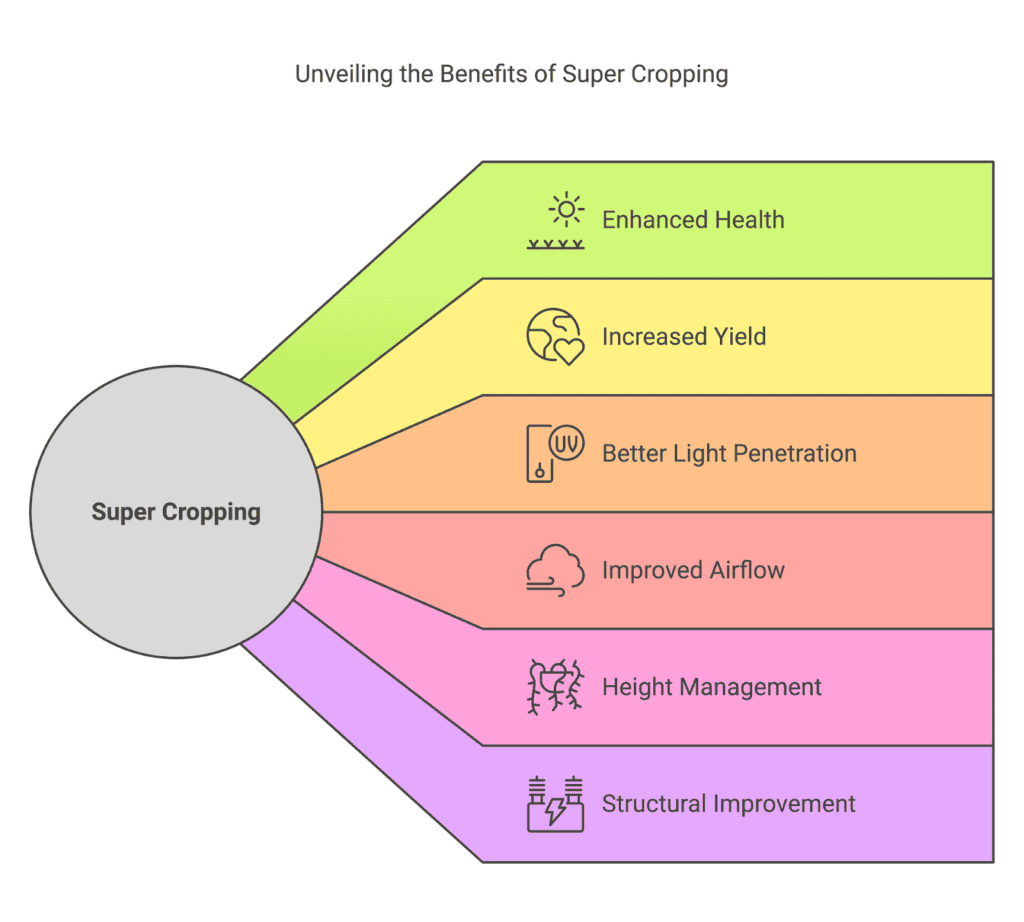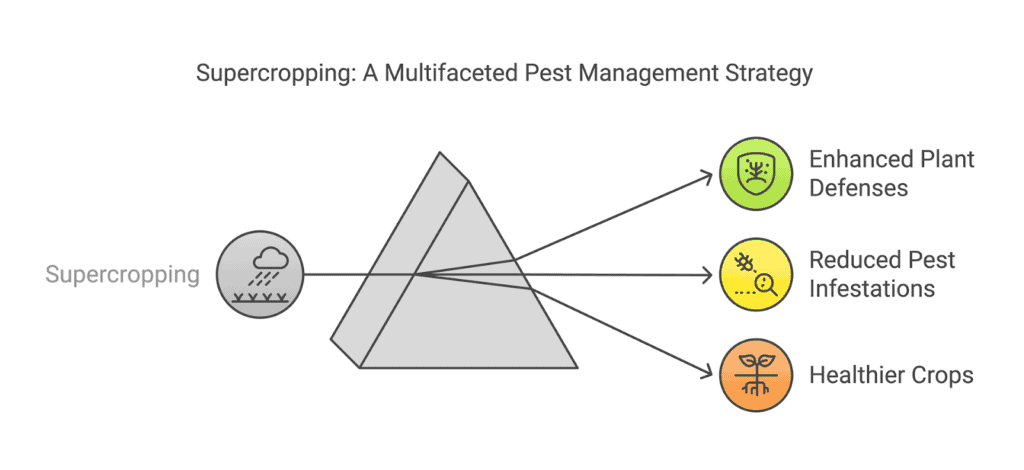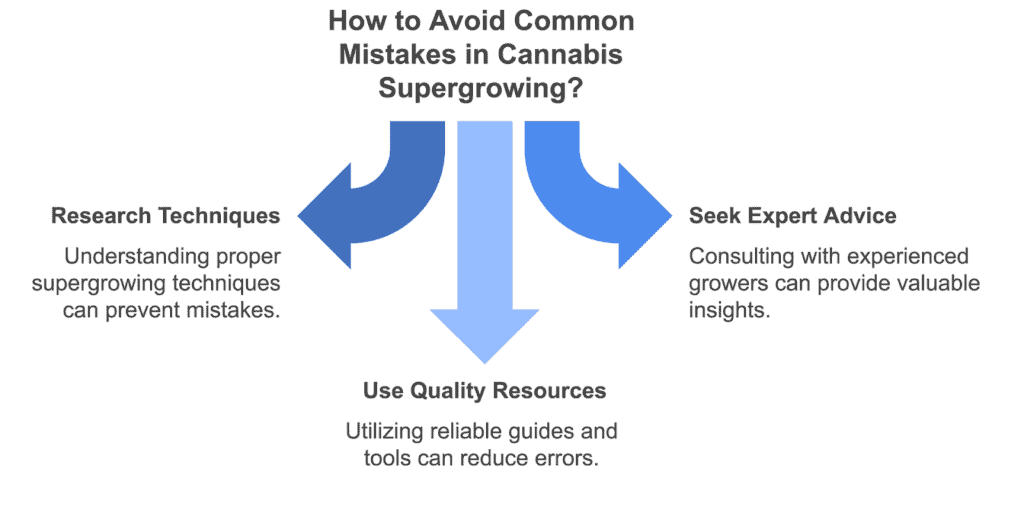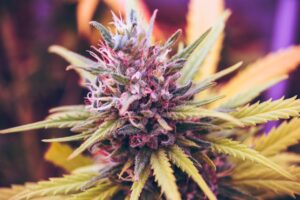Supercropping is one of the strong methods that cannabis growers use to maximize plant yields and potency. High-stress training is when stems are bent and manipulated so that they grow stronger and produce more abundant buds. The right approach to supercropping can make a big difference in the quality and quantity of your harvest. In this guide, we’ll dive into everything that you need to know. For you to master the technique, its benefits and timing as well as more practical steps towards success.
Key Takeaways
- Supercropping is a hands-on, high-stress training technique that helps growers boost cannabis yields and potency.
- This method involves bending stems to enhance light penetration and promote an even canopy.
- It is best applied during the vegetative stage, requiring proper care to ensure plants recover fully.
What Is Cannabis Supercropping and How Does It Work?

Cannabis supercropping is a technique of cultivation in which you can deliberately stress the plant for stronger growth and higher yields. You would do this by careful pinching or bending of the stems, causing the plant to produce multiple colas and thus enhance light penetration. This induces the plant’s natural defense mechanism, which enhances the overall health and robustness of the growth.
Why Should You Use Supercropping?
Supercropping offers a range of benefits, including:
- Encouraging the development of multiple colas for more abundant bud production.
- Increasing the potency of buds by boosting THC and cannabinoid levels.
- Helping the canopy achieve even light distribution, which maximizes efficiency.
- Strengthening the plant’s resilience against environmental stressors.
How Does Supercropping Differ from LST?
| Feature | Supercropping (HST) | LST (Low-Stress Training) |
| Stress Level | High | Low |
| Recovery Time | Requires days to recover | Minimal recovery time needed |
| Effectiveness | Enhances potency and yields | Controls growth direction |
| Skill Level Required | Best for intermediate or advanced growers | Suitable for beginners |
For those seeking significant improvements in bud quality and yield, supercropping can offer superior results compared to low-stress training.
When and How Should You Super Crop Cannabis Plants?

Applying supercropping at the right time and with the correct technique is crucial for achieving the desired outcome.
What Is the Ideal Timing for Supercropping?
- Vegetative Stage: Supercropping is most effective during this phase when the plant’s stems are pliable and have enough time to recover before flowering begins.
- Early Flowering Stage: While possible, proceed with caution as the plant may have less flexibility and recovery time.
How to Perform Supercropping
- Choose the Right Branches: Focus on stems that are thick but still flexible and show no signs of damage.
- Pinch the Stem: Use your fingers to gently squeeze the stem until it softens slightly.
- Bend with Care: Bend the stem at the softened point, creating a horizontal angle without snapping it completely.
- Repair Breaks if Necessary: If a branch breaks, immediately secure it with duct tape to facilitate healing.
- Allow Time for Recovery: Monitor the plant to ensure it recovers fully before attempting further training.
Properly executed supercropping ensures the plant’s energy is directed toward productive growth while minimizing unnecessary stress.
What Are the Benefits of Super Cropping Cannabis?

Supercropping is popular among experienced growers for its ability to significantly improve the plant’s overall performance.
Key Advantages of Supercropping
- Better Light Penetration: Creating an even canopy allows all bud sites to receive adequate light exposure.
- Higher Yields: By encouraging multiple bud sites, supercropping directly increases the amount of harvestable cannabis.
- Enhanced Potency: Stress-induced growth often leads to denser trichome production, boosting THC levels.
- Improved Pest Resistance: Healthier plants with stronger structures are less likely to succumb to pest infestations or diseases.
How Does It Improve Yield?
Supercropping improves yield by distributing light evenly across the plant and encouraging energy to flow into multiple bud sites. This approach reduces shading and allows smaller buds to grow to their full potential. Combined with a well-timed recovery phase, these factors contribute to a noticeably larger harvest.
Can Supercropping Help with Pest Management?

Healthy cannabis plants are naturally more resistant to pests and diseases. Supercropping strengthens the plant’s internal structure, which helps it better withstand environmental challenges.
Tips for Reducing Pest Risks During Supercropping
- Keep the Grow Area Clean: Regularly sanitize tools and remove plant debris to deter pests.
- Inspect for Pests Frequently: Monitor the plants for early signs of infestation or disease.
- Optimize Nutrition: A well-fed plant is more resilient and recovers faster from supercropping stress.
Implementing these practices alongside supercropping can further protect your plants from unwanted threats.
Can Supercropping Be Combined with Other Techniques?
Supercropping works well when combined with other training techniques such as low-stress training or defoliation. Together, these methods give growers precise control over the plant’s growth and productivity.
Advantages of Combining Training Techniques
- Improved Canopy Management: Using multiple methods ensures a flat, even canopy for maximum light absorption.
- Enhanced Growth Control: You can manipulate how and where the plant grows to suit your grow space.
- Greater Yield Optimization: Pairing techniques allows for a comprehensive approach to maximizing yield.
It’s essential to monitor your plant’s response closely when combining techniques to avoid overwhelming it with stress.
How Can Inexperienced Growers Avoid Common Mistakes?

New growers often encounter challenges when trying supercropping for the first time. However, with careful attention and practice, these issues can be avoided.
Avoidable Mistakes
- Applying Too Much Pressure: Excessive force can cause irreparable damage to the stem.
- Supercropping Too Late: Attempting this method during the late flowering stage can harm the plant and reduce yields.
- Skipping Recovery Time: Not giving the plant enough time to heal may lead to stunted growth or weak branches.
Suggestions for First-Timers
- Start small by practicing on lower branches before tackling the main stems.
- Use gentle pressure and work slowly to minimize the risk of breaking stems.
- Observe the plant’s recovery and adjust your approach based on its response.
Patience and attention to detail are essential when learning how to supercrop effectively.
Conclusion
Supercropping is a good technique for growers who want to push their cannabis plants to the limit. The sensitive stress on the stems allows for better light distribution, yield, and potency. This is a technique that requires precision and practice but yields great returns when done correctly. Healthy plants with adequate recovery time are at the heart of successful supercropping, and it’s one technique that all growers should attempt to elevate their cultivation game.
Frequently Asked Questions
How do you super crop your cannabis plants?
Super cropping is a high-stress technique that involves bending branches to damage the stem slightly. This helps the plant grow a flat canopy, leading to bigger yields and more potent buds. Allow time for the plant to recover after applying this technique.
What should you do if branches break during super cropping?
If branches break, secure the damaged area with tape to let the plant recover from the stress. This can strengthen the marijuana plant and improve its growth pattern.
Can you super crop during the flowering stage?
Super cropping during the flowering period is not ideal. Use this technique during vigorous vegetative growth or the first two weeks of flowering to avoid harming the plant’s ability to produce flowers.
How does super cropping benefit the cannabis plant structure?
Super cropping helps create a flat canopy and multiple colas, improving the plant’s structure. This allows for better light exposure and results in bigger yields and more potent buds.
Should autoflowering cannabis plants be super cropped?
Avoid super cropping autoflowering cannabis plants, as their shorter life cycle leaves less time to recover. Low-stress techniques are better for these plants.








